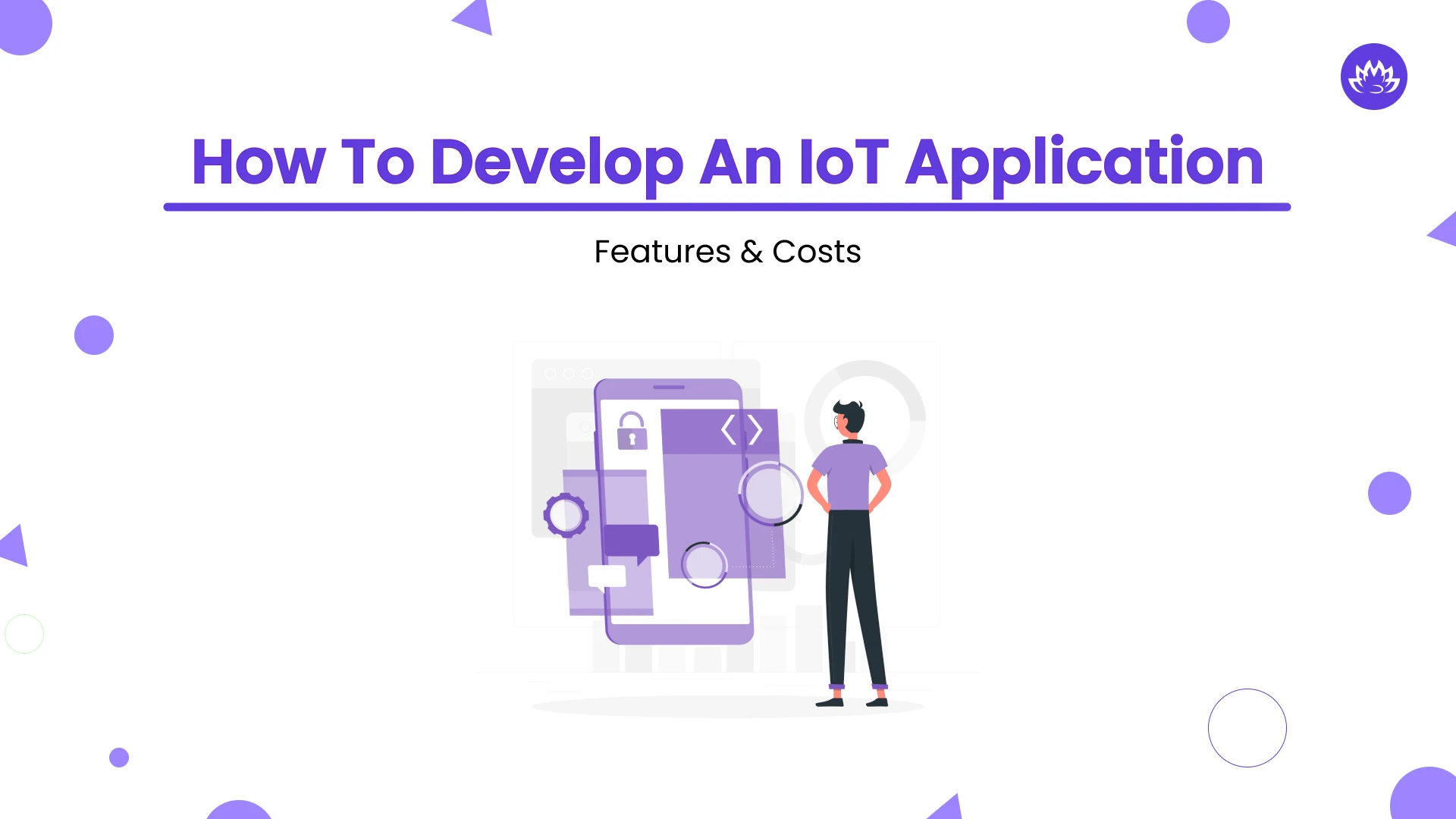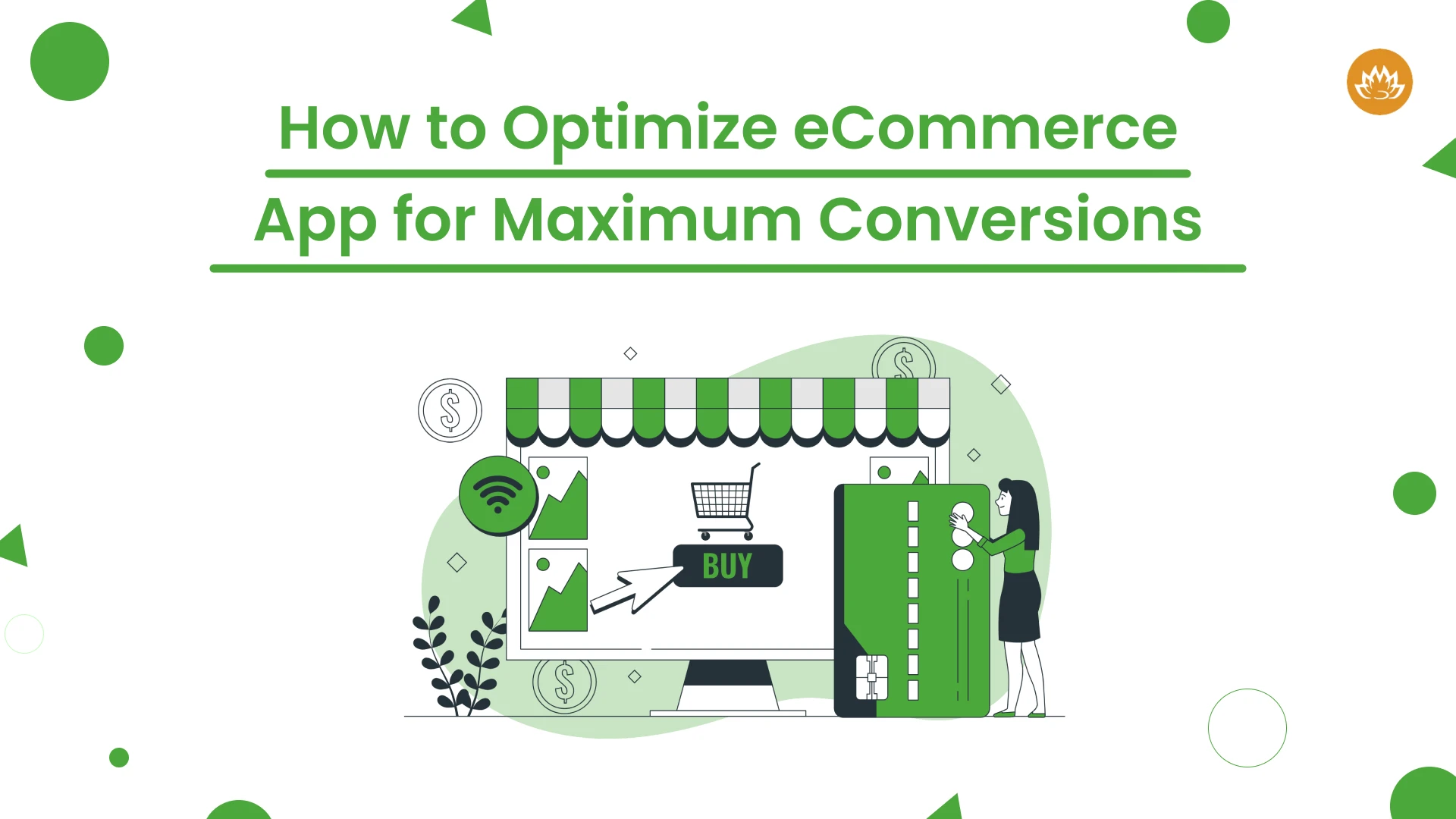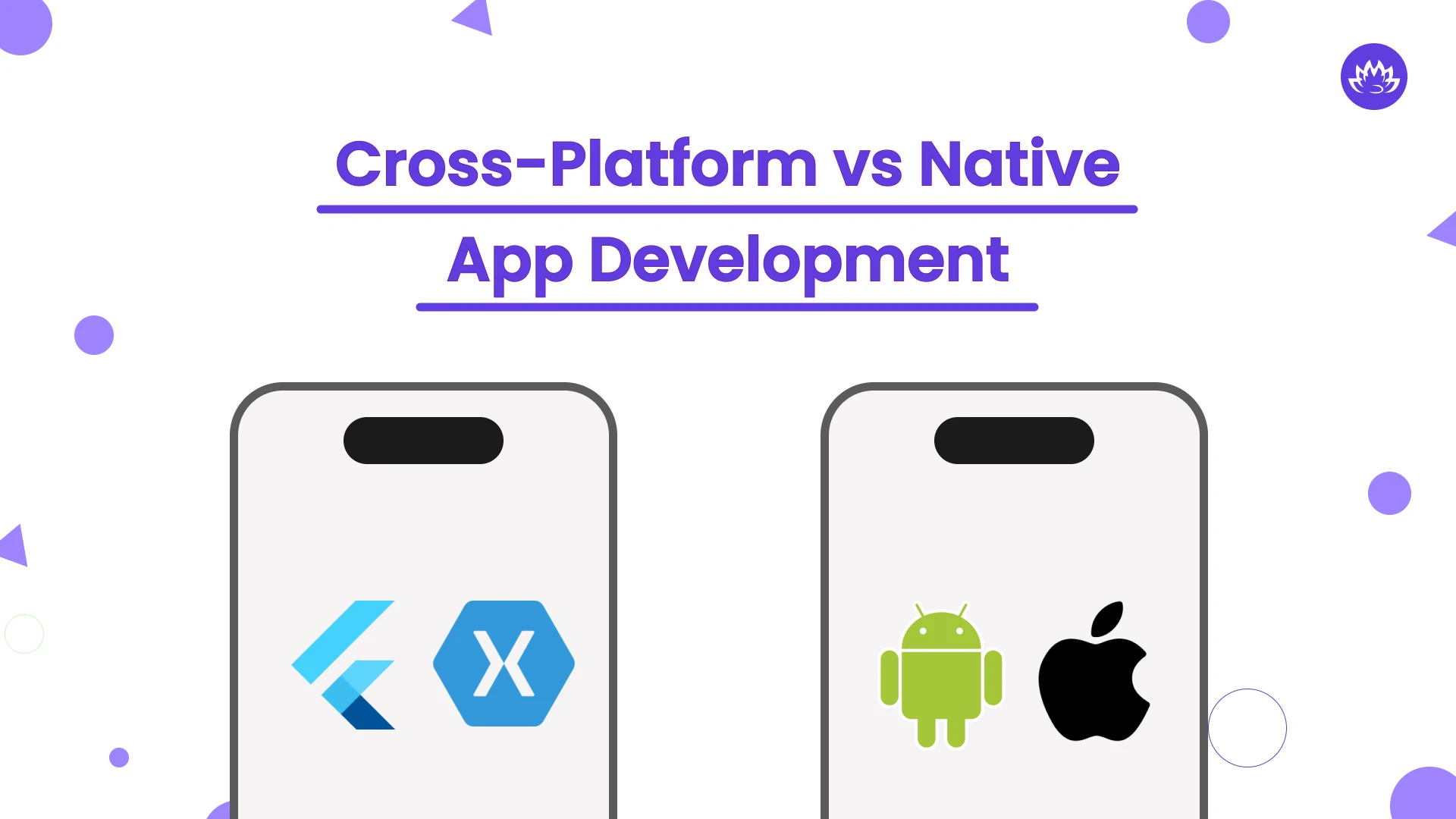The Internet of Things industry is growing. The future is here. Everything we used to see in sci-fi movies—flying automobiles without drivers, homes that can respond to your commands, and an intelligent assistant who knows everything about what you exactly want—is now real, and much more.
If you’ve ever considered developing an IoT app, now is the time to start. Some companies provide top-quality IoT application development services. This article will expedite research and address some of the most pressing Internet of Things app development problems. We will also discuss the importance of IoT applications and how to create one for your organization. It will cover all of the prerequisites you should be aware of before beginning to design the application, as well as assist you in determining the best approach to take.
What is IoT App Development?
IoT app development entails designing software applications that use Internet of Things (IoT) technologies to improve IoT devices’ functionality and user experience. These apps can connect to equipment via sensors and internet access to provide remote monitoring, battery status updates, and even predictive maintenance notifications. By creating IoT apps, we can increase the efficiency, convenience, and sustainability of device usage, benefiting manufacturers and consumers.
Why Must You Develop an IoT Application?
During the worst outbreak in a century, IoT spending exploded. The pattern continues for the foreseeable future. The graph below depicts the estimated spending on IoT in the coming years.
You do not want to join this technological giant without first researching. If you intend to construct an app (or have it produced by a tech partner), ensure it is personalized to your needs. A ready-made solution may appear convenient in the short term, but an IoT application represents a significant long-term commitment in terms of time and money. As a result, you should assess the entire return on your investment.
The IoT technology sector has seen a remarkable increase. The market was valued at $445.3 billion in 2025, and it is expected to reach more than $934 billion by 2033.
The global IoT healthcare industry is expected to reach $83.81 billion by 2024, making healthcare app development a hugely important topic in the coming years.
The global IoT medical devices market is expected to reach $166.5 billion by 2028, growing at a 32.1% CAGR.
Some of the top industries that are finding solutions for their business problems through building IoT applications are smart homes, healthcare, automotive, Logistics, Retail, and Smart Farming.
How to Develop an IoT application in just 5 Steps?
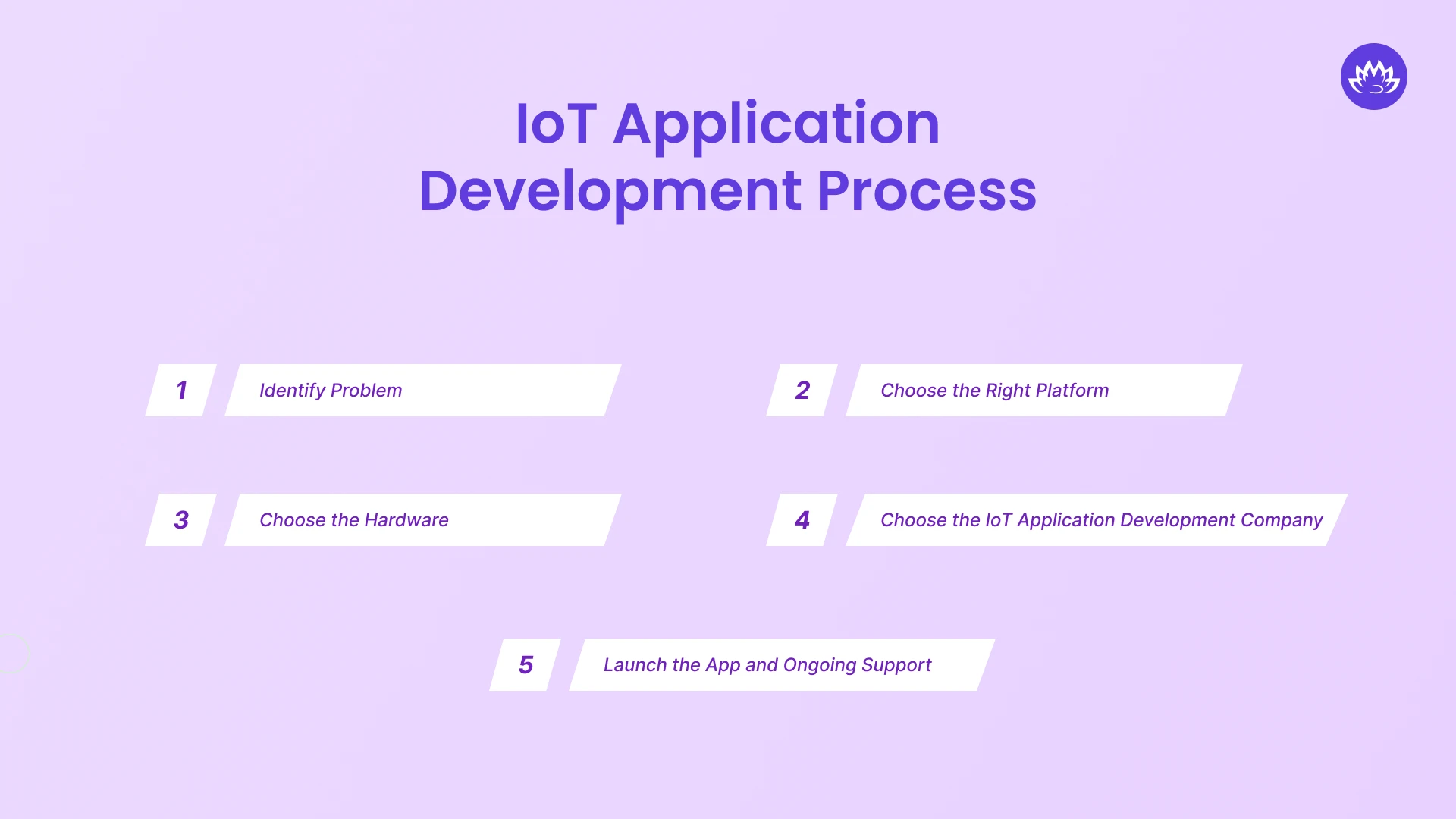
Once you understand the reasons for developing an IoT application for your business, we want you to understand the process of creating one such stunning app. For that, you can approach a reputed mobile application development company that can help you create a stunning IoT architecture for your app.
Identify Problem
If you’re unsure where to begin, start by identifying the problem you want to tackle via an IoT system. You can either construct a solution for internal needs or develop an application and turn it into a business that can be used outside of your organization. If you go with the latter approach, you must undertake market research to discover your competition, target demographic, and client demands.
Choose the Right Platform
As you know, numerous IoT app development platforms are available to help you create your own solution. In addition to the abovementioned tools, you may create an IoT application using Android Things or HomeKit. Both systems attempt to address the problem of hardware inconsistency by linking devices from several manufacturers into a uniform system.
Choose the Hardware
You can design your hardware for your IoT solution or use an existing one. If the latter is the case, you may need to consider microcontrollers and microprocessors. Arduino Uno, Mega, ESP8266 or ESP32 boards, STM32F boards, Raspberry Pi, Beaglebone, and other boards are also viable.
Take a look at the available sensors. Oxymeters, pedometers, and pulse monitors are all necessary while building smartwatches. However, if you are constructing innovative vehicles, you will require additional sensors such as GPS or altitude monitors. Depending on whether your gadget is consumer-based, industrial, or automotive-focused, you will need to obtain appropriate sensors. Industrial and automotive sensors must be significantly more reliable than those on consumer devices since they perform more delicate jobs.
Once you’ve decided on the sensors, you’ll need to consider the more extensive hardware architecture and choose whether you need microcontrollers or microprocessors on the device to process data.
Choose the IoT Application Development Company
The next step is finding a mobile application development company to help you create a seamless IoT application. You can hire dedicated developers to fulfill this task. You must consider certain factors before you finalize any software development company. The chosen company must have previous experience in IoT app development. Their team of developers must have successfully developed projects that are providing results to their clients. Lastly, their customers should have offered positive reviews.
Launch the App and Ongoing Support
When deciding between development vendors, consider the one that offers continuous support services. After the IoT solution is released, you will need to update its software, keep its security measures up to date, and add new capabilities.
What are the Major IoT Components?
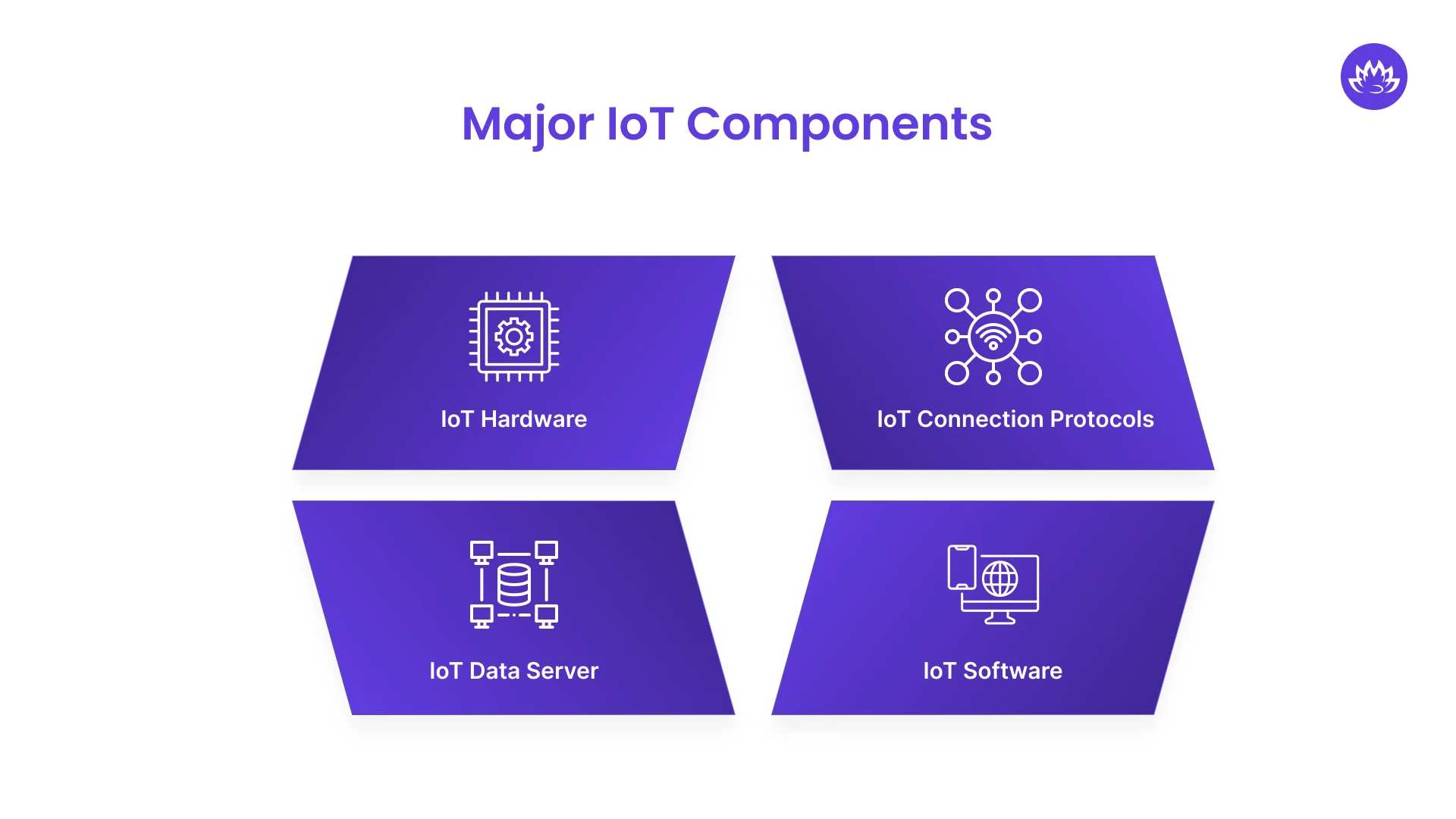
Technically, IoT networks consist of the following four components:
IoT Hardware
Sensors and other devices initially collect data about their environment. This information could be as simple as a temperature report or as complex as a full video stream.
The hardware component of an IoT system cannot be reduced to “sensors” because multiple sensors might be coupled, or sensors can be part of a device that does more than just perceive things. For example, although having several sensors (such as a camera, accelerometer, GPS, and so on), a smartphone is more than just a sensor because it can perform many functions. Regardless, IoT hardware that collects data from the environment is component one.
IoT Connection Protocols
After the data is gathered, you must transfer it to the cloud, where it is stored. You can transfer the data of your hardware in certain ways, such as through Wi-Fi, Bluetooth, Cellular, LoRaWan, MQTT, XMPP, Zigbee, or Z-Wave.
Each alternative has trade-offs regarding bandwidth, range, and power consumption. The best connectivity option depends on the IoT application, but they all accomplish the same thing: transfer data to servers.
IoT Data Server
The server stores and processes the information received from the hardware device. Cloud services are the most popular choice for servers since they provide high security while low maintenance.
Data from the IoT platform can have various characteristics. It may ensure that the temperature reading is within the acceptable range, or it could recognize objects (such as robbers in a house) using computer vision on video. When specific data becomes actionable, such as the temperature rising too high or someone breaking into the house, the software application is called into action.
IoT Software
Finally, we develop IoT applications, or software, that show processed data and help users take action. The software can take numerous forms, including mobile apps, web apps, and IoT middleware.
The software’s functionality varies by scenario, but most IoT apps include data visualization, remote control, and notification capabilities, among other things (more about that in the following section). The user may have access to an interface allowing them to continuously monitor the IoT system. For example, a consumer may want to use a phone app or a web browser to check video feeds from multiple properties.
Depending on the IoT platform, the user may be able to interact with and influence the system. For example, the user could use an app on their phone to remotely modify the temperature in the cold storage. Users can also receive notifications (by email, SMS, etc.)—for example, a text message alarm if the temperature in the cold storage facility increases too high.
Top Features of IoT Applications

Different IoT applications vary in functionality. In the very first phase, you must incorporate a number of features into your IoT application.
GPS Tracking
Many IoT systems place a high value on knowing precisely where each device is. Thus, GPS tracking features in the IoT app are essentially required.
Remote Control
Most IoT apps should allow you to control the hardware to which they are linked. This could include altering the temperature, selecting a specific operating program, or simply turning the gadget on and off.
Connectivity
The most essential element for creating an IoT app is the ability to connect to hardware; otherwise, it is entirely worthless. The software communicates with the IoT hardware over one or more connection protocols to enable it to perform its various functions.
Access Restriction
IoT networks contain massive volumes of sensitive and personal information. That’s why most IoT apps require access control via FaceID or PIN-code app locks and secure data transmission protocols.
User Profile
Personalization is essential when developing IoT applications. In the profile section, users can manage their personal information, notification preferences, presence sensing, security, and privacy settings.
Data Analytics
IoT is all about providing useful real-time insights and data. Depending on the nature of your IoT platform, the dashboard is responsible for visualizing all of the data and providing occasional reporting and analytics. This information might include everything from the number of available parking places to room temperature.
Activity history
You may want to create an IoT app that includes activity history. It shows which devices were activated or disabled, how they were moved, and what actions were taken inside the app.
Notifications
Notifications allow users to stay informed and receive real-time alerts on any changes that occur. For example, when there is activity at the door, smart doorbells equipped with motion sensors notify the user’s device.
How to use Manual/Tutorial
Tutorials in the form of screens that guide users through the app’s interface and main features aid in onboarding and provide a positive user experience.
How Much Does it Cost To Make an IoT App?
The cost of developing an Internet of Things application ranges from $80,000 to $250,000, depending on the program’s complexity. If you decide to create your own hardware, you will have to pay for it, which may raise the overall cost.
However, several factors influence the exact cost of development. Some of the major factors are the size and location of the mobile application company, the complexity of the project, the complexity of the UI/UX design, and the number of features and platforms that you want to cover. This means whether you want to launch an iOS and Android mobile application simultaneously or any one of them.
To sum up, the app development cost remains $80000 for IoT apps with basic functionality. For a slightly complex app, the cost may go up to $100000-$150000. A complex app with many features will cost around $150000.
Conclusion
This post should have provided you some ideas for developing your own IoT application. Of course, IoT development will have obstacles, but the process can bring insights into how your company functions and how it might improve.
The first stage in designing an IoT application is to have a decent idea, which should be straightforward. The next stage would be to form a team or group of individuals to work on your new project or company. With these in place and a solid plan, your IoT application will perform as planned.
Whitelotus Corporation is the leading IoT application development company. Contact us if you are all ready to explore your idea of developing a business-driven IoT application for your business. Call us today to learn more about our services.
Author
-

Kirtan is CEO of Whitelotus Corporation, an emerging tech agency aimed to empower startups and enterprises around the world by its digital software solutions such as mobile and web applications. As a CEO, he plays key role in business development by bringing innovation through latest technical service offering, creating various strategic partnerships, and help build company's global reputation by delivering excellence to customers.
View all posts



